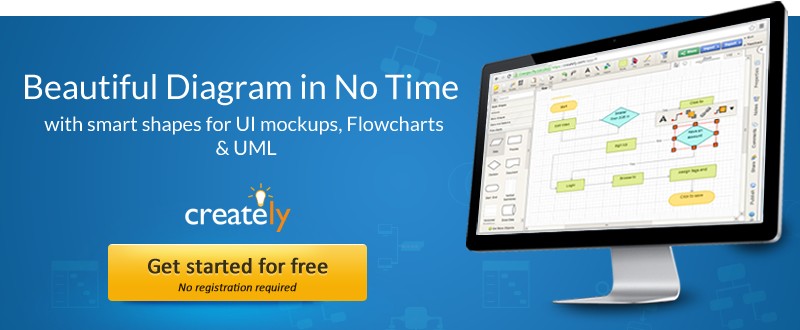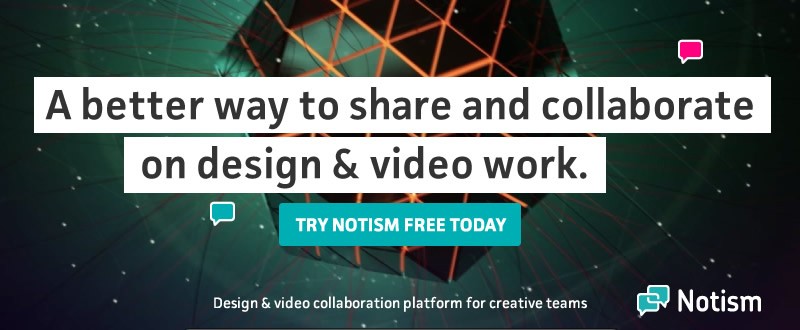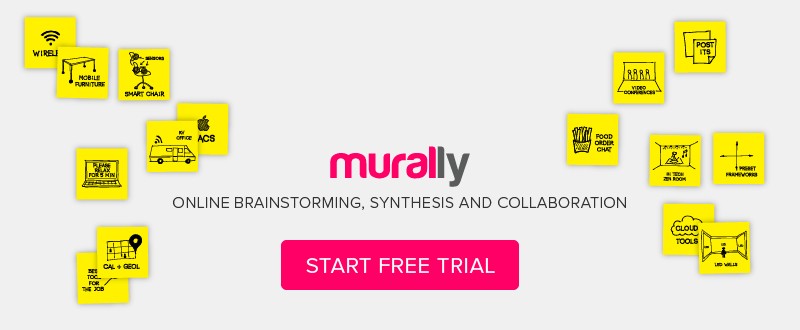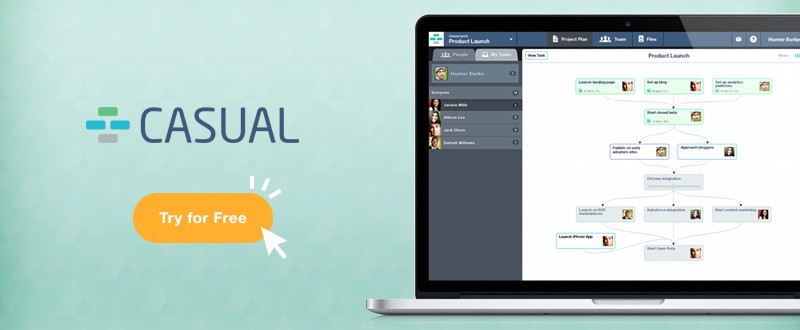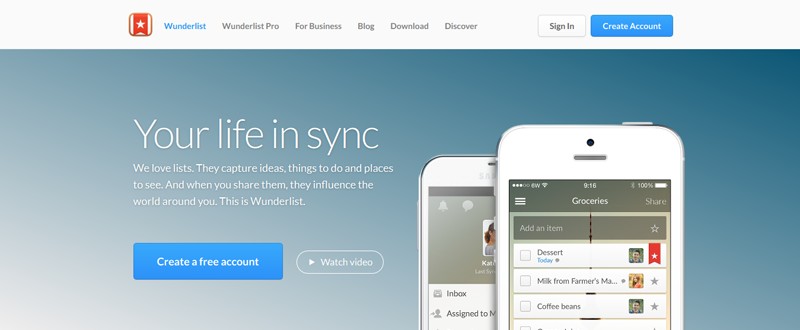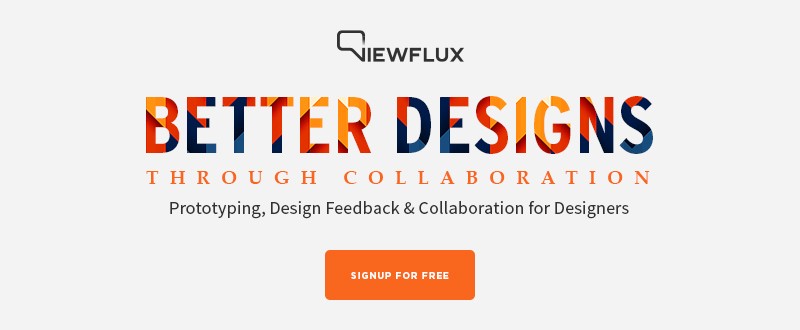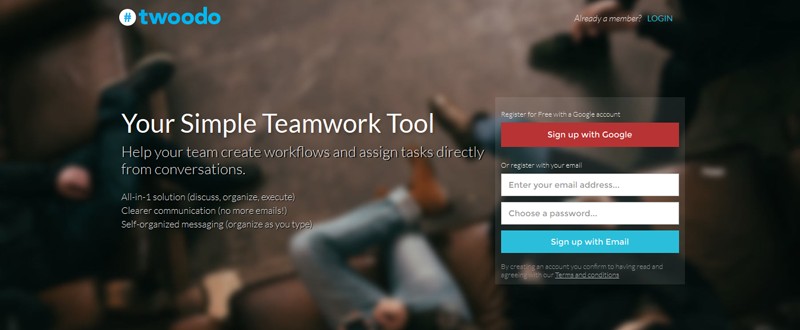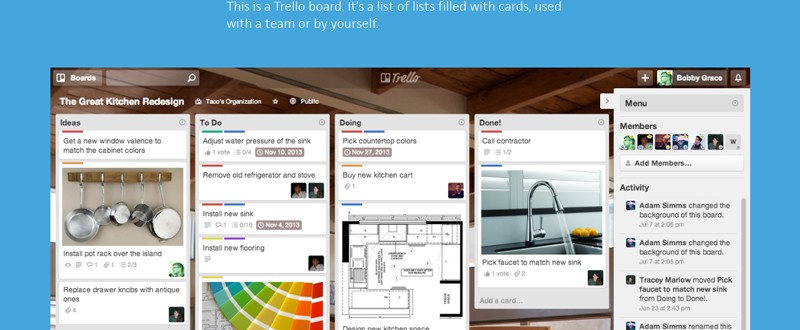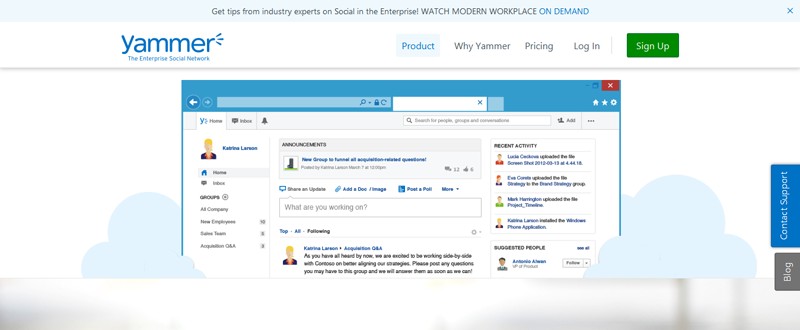If you’re in charge of a small creative agency, don’t make the mistake of thinking that there is no need for careful project management. You wouldn’t believe how many collaboration and market advantages arise if you just pay a little attention to the details of your teamwork routine.
Don’t think for a second that you need some special qualifications to handle your own projects. At a start-up level, you only need to know your own business, and be willing to give formal collaboration software a chance. The following 15 recommendations are ideal to start with, if you’re a creative person and likely to be a complete stranger to semi-automated solutions of this type.
Paymo
My opening vote goes to Paymo, a start-up-focused platform that paves the way for simple project management and supports elegant team collaboration. As soon as you meet its dashboard, the first impression that arises is one of utter control. It is up to you to decide what the overview expresses, but ongoing projects, your most important clients, a timesheet and the input working hours of your team shouldn’t be missing.
Paymo particularly responds to creative teams that are at the beginning of the road. It fits like a glove, when your intention is to manage tasks and track time in an orderly manner, and so avoid common mistakes as you tackle a multitude of projects. Stress can be a negative factor when you’re feeling overwhelmed, and this platform has the antidote. Use recurring templates for company projects, and choose some for the e-mails meant for your clients, too. In terms of accessibility, you won’t find any faults with Paymo: it supports 16 languages, has widgets for Mac + Windows, and can be used as a mobile app.
Creately Diagramming
Entrepreneurs who lead web design and development companies are essentially creative individuals who appreciate logical structures and visual clarity. That explains why each and every project has to include crystal-clear diagrams that show how the budget is to be spend. Besides, the diagrams have to look splendid. Why bother to create them from A to Z every time you get started on a database, sitemap, UI or UML mockup?
Go forward with a solution like Creately, instead. Its utility is unmistakable. Creately enables live whiteboard sessions and offers diagram templates that are prepped for lightning-fast customization – along with a smart shapes feature to cut down diagrams and convert text into graphics. All in all, you wouldn’t believe how much of your team’s energy and time this solution saves.
TeamGantt
If you happen to have just two other colleagues, or you’re basically a one-man company, then I would like to suggest you take TeamGantt for a spin – it doesn’t cost a dime for 30 days. See how you get along with this platform when it comes to setting baselines for your projects, assigning tasks and task dependencies, and monitoring your schedule straight from the desktop calendar.
TeamGantt is salvation for those of us who joggle with spreadsheets. As you take up more and more projects, sometimes you carelessly close an old spreadsheet. When that realization hits you, you open it again, then complete the tasks that were left and send messages to coworkers and clients, citing those updates. That is one problem you’ll never have to encounter again, due to TeamGantt, the project management platform that lets you monitor all projects in a centralized location.
Crowdbase
How about a project management tool that also acknowledges the priceless value of staying informed within the crowded setting of today’s web design and web development industry? Crowdbase is unique, insofar as it empowers your team to grab all the available intelligence about competitive companies and the market at large. Hence, you can use it as leverage. With Crowdbase, you are able to see activity reports and stats, share any type of files with the user groups you establish, and discuss them.
Wrike
Is your team is delivering new creative solutions fast enough? No matter you’re across the hall or across the country, Wrike will help you act at full capacity. It lets you share milestones, upload and discuss mocks, and track progress, – all in real time. It allows for a multitude of users to create task requirements and modify documents, simultaneously. As soon as a mock is uploaded, a feedback is added, and a task is completed, you’ll be the first to know, even if you are on the go.
Notism
How do you usually go about gathering feedback on your unfinished prototypes? Does it involve sending files back and forth within you team and eventually towards your clients, pending further comments and approval? Why don’t you spare yourself some headaches, and enlist software that helps you display static layouts as comprehensive prototypes for the web/mobile? Notism is a visual feedback platform that will get you constructive input at crucial stages of your product’s development, and in record time.
Teamfocus
In case you’re fed up with attending meetings for updates on a project, then it’s high time you embraced the future of team collaboration. It won’t be long before every small- to medium-sized business reaches out to web based solutions in order to manage their resources and project tasks. Teamfocus does exactly what the name says, it provides a simple way for your team members to collaborate and update each other, so the main focus falls on sharing.
Mural.ly
It is common knowledge that face-to-face meetings tend to stretch endlessly, and use up a lot of everyone’s time because it usually takes too long to reach unanimous consensus in a certain matter. Well, here’s what you can do about that. You can turn to management software whereby your team members cast their votes nice and quick, which speeds up the project’s overall progress. Mural.ly would be a fine choice, and a great canvas to express views by dropping content.
Casual
Wouldn’t it be great if you could deal with project scheduling as casually as you deal with the projects themselves? Believe it or not, you’re not facing an impossible mission. Project management is a an art in itself, so why not tackle it in a visual manner? Give Casual a try. With this tool, you may plan out every stage of your project like drawing a flowchart. What is more, you should save each project you complete, and use templates to save time in the long run.
Wunderlist
Every crash course in project management is bound to begin by underlining the importance of knowing what you want to obtain. And think what you like, but lists get things done. They set a plan in motion. Wunderlist is a simple platform that lets you plan specific goals, for you and your team to work towards.
Hall
Don’t you just love it when you come across proficient tools, find that they’re actually free of charge,and can’t believe your luck? I’ve only just had this pleasant thrill upon discovering Hall. It supports cross-platform collaboration within web design teams, not to mention that it encrypts all of your data.
ViewFlux
Since we’re all part of a business that revolves around visual creativity, it’s only natural to feel drawn to solutions that give us a visual environment to do our work in. ViewFlux is one of the best examples. During a project, store your source files here and invite coworkers plus clients to offer feedback on prototypes.
Twoodo
It’s totally understandable that, if you’re going to give formal project management a shot, you don’t want to be forced into putting in lots of overtime to get the hang of it. Twoodo is basically devoid of a learning curve, so you can can organize departments, and forget about forms and templates – simply generate workflow from discussions.
Trello
In all likelihood, it’s much easier for every creative individual to organize over a project by pinning various information and to-dos on a board, and have the broader picture in front of their eyes. Trello functions on the board principle, and allows you to add visual card after visual card until you complete a list of lists.
Yammer
Managing your team can be as enjoyable as getting together on a social network. Yammer is a notorious collaboration tool that unites teams towards a common goal, and does away with org charts in the process. It creates optimum conditions for your team to brainstorm comfortably, and makes sure that everyone is notified of updates.
Conclusion
In the end, project management is not such a far out issue. Relatively small creative teams, who organize better, deliver the best results, hence undermine their competition and get more clients. More business means your company will bloom, and your team-expand. All in all, these web-based solutions could really be of service, and help you achieve your short- and long-term goals. Tell us, did you like either one of them above the rest, and why so? We’re looking forward to your feedback.


